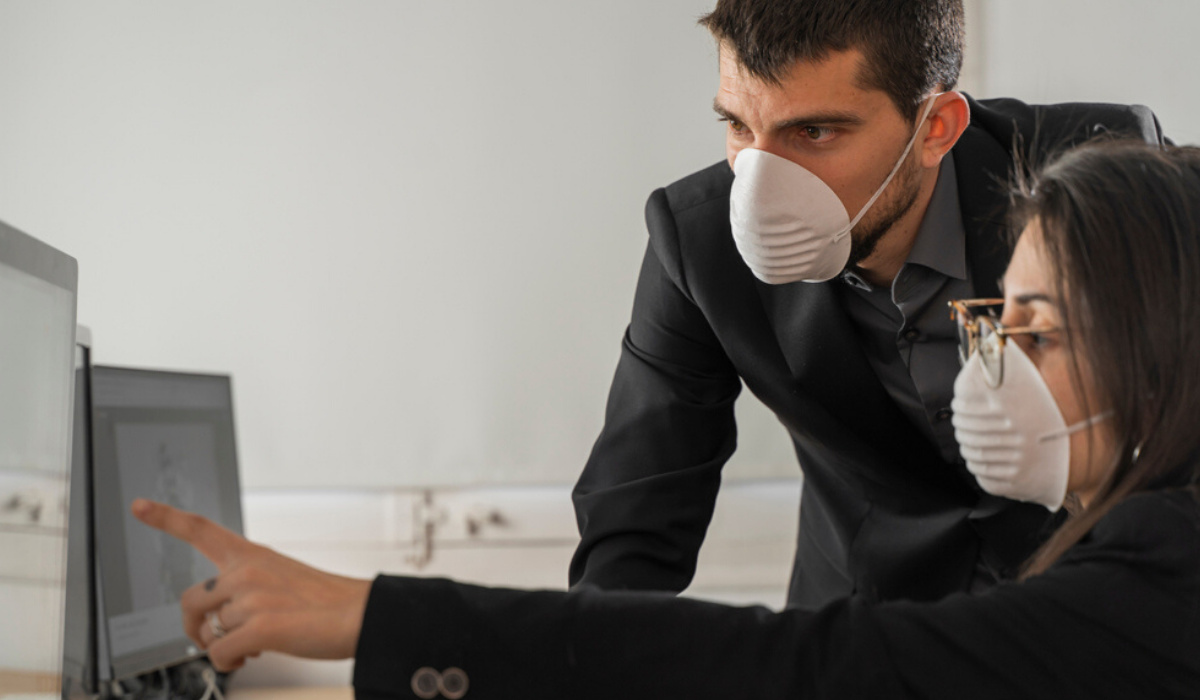COVID-19 has made a significant impact on people. Until the pandemic, who would have been using "social distancing" in their everyday vocabulary? No one was aware that it is possible to close so many countries at once. There is also a shift in how people do work in regards to where they work, how they interact with coworkers, and how they deliver results expected of them.

The following are five ways COVID-19 has changed the workplace.
1. The number of people willing to work from home will increase
Globally, people were encouraged to stay at home to prevent the spread of COVID-19, so many professionals quickly adapted to working from home. The move to Work From Home (WFH) might have been introduced by some companies even before the pandemic, but many companies still preferred the traditional physical office setup. Whichever category a company belonged to, its employees quickly adapted to a Work From Home setup so that business operations could keep running smoothly.
It was a challenge for people to suddenly move into a Work-Ready Home setup since they did not have the needed infrastructure. In order to make video calls, office-based professionals needed a dedicated workspace and the necessary technology. It was difficult to get a fast and reliable internet connection because that was one of the biggest challenges.
Over time, Stay-At-Home orders will be lifted, allowing organisations to resume working in their physical offices. Many workers will want to continue to use Work From Home as an alternative mode of working, even though they can return to the office. Those who know they can remain productive even without being in the office may want to Work From Home more often.
The experience of working from home for months has taught them how to create a suitable work environment. Getting their work done without having to physically go to an office has become second nature to them.
2. A LARGER BROADBAND OF FLEXIBILITY
Many organisations are taking a second look at what employees are expected to accomplish on a daily basis in the wake of the COVID-19 epidemic. Employers have learned which job roles and responsibilities can be carried out from home and, conversely, which positions require in-person participation as a result of evaluating job roles and responsibilities and how employees perform their work.
It's important to note that companies must offer more flexibility. Despite the fact that there may not be a complete shift to a Work From Home arrangement, employees are likely to want the freedom to rethink why employees need to be in the office and consider the benefits of having a smaller workspace.
There are still many people who prefer in-person interactions in the office, despite the fact that more people prefer to work from home. It is important for organisations to be able to accommodate these preferences.
3. E-learning is more important
As a result of the COVID-19 shutdowns, many organisations have encouraged their employees to take e-learning courses in order to continue their professional development. It may have already been available to employees via e-learning before the pandemic, but many employees may have preferred workshops and seminars in person.
People in the pandemic have become accustomed to attending virtual classes, seminars, and training while taking e-learning courses in the comfort of their homes. The use of e-learning in employee training and development will remain an essential component of COVID-19. Remote working may even take up a greater percentage of the learning curriculum than traditional face-to-face learning.
Virtual training and e-learning have become more refined and accessible thanks to technological advancements. Additionally, companies should consider the benefit of reducing employee training costs by employing e-learning. This has resulted in greater e-learning opportunities at work, one way COVID-19 has changed the workplace.
4. ENGAGE EMPLOYEES & BUILD A TEAM
An organisation's success has always relied heavily on the engagement of its employees. As a consequence, people are even more likely to work on their own at home during the pandemic. Working from home does have many benefits, but it also has downsides, including social isolation and loneliness. Managers are therefore responsible for keeping their teams motivated.
Managers are responsible for ensuring open communication between teams working from different locations and that their team members are aware of the company's strategic direction.
In order to boost morale and drive employee engagement among staff who work remotely, managers have organised virtual team building activities. Celebrating birthdays or recognizing achievements over video calls can be an effective team building activity. It is imperative that managers select activities that will benefit their teams as well as help to increase employee engagement.
5. DESIGN A NEW WORKPLACE
There will also be physical changes in your workplace once people return to work in a physical office. Keeping your employees safe and healthy will be of the utmost importance. It is likely that sanitation protocols, temperature checks, and social distancing measures will be implemented.
In addition, people will become more engaged in community life and a more collaborative workplace will emerge. Before the pandemic, some employees preferred to work in isolation rather than go to work. Meeting colleagues, brainstorming, and having social gatherings at their workplace will now become more common. Creating a work environment that fosters collaboration, creativity, and innovation will be achieved through these interactions.
CONCLUSION
There have been numerous changes around the world as a result of the pandemic. Perhaps the most important change is in our work habits. Companies and their employees have to adjust to new ways of doing business, which means developing hybrid workplaces that fit everyone's "new normal."
Source: https://www.yoh.com/blog/5-ways-covid-19-has-changed-the-workplace
|